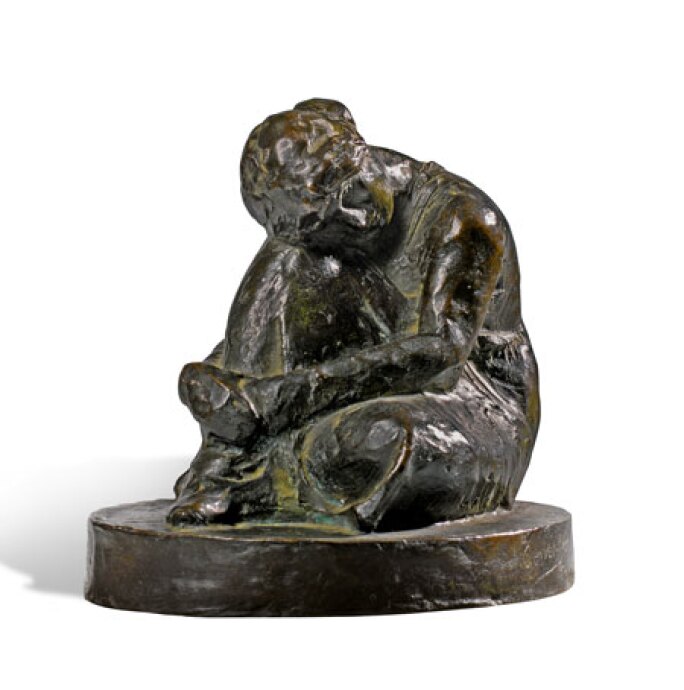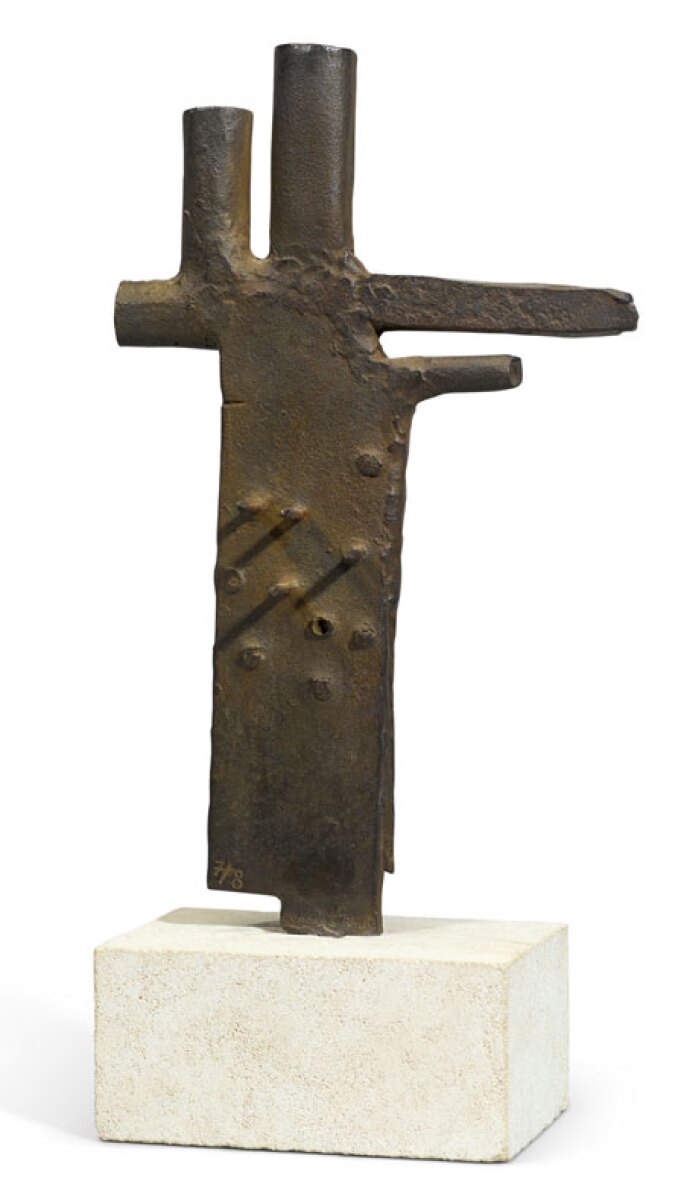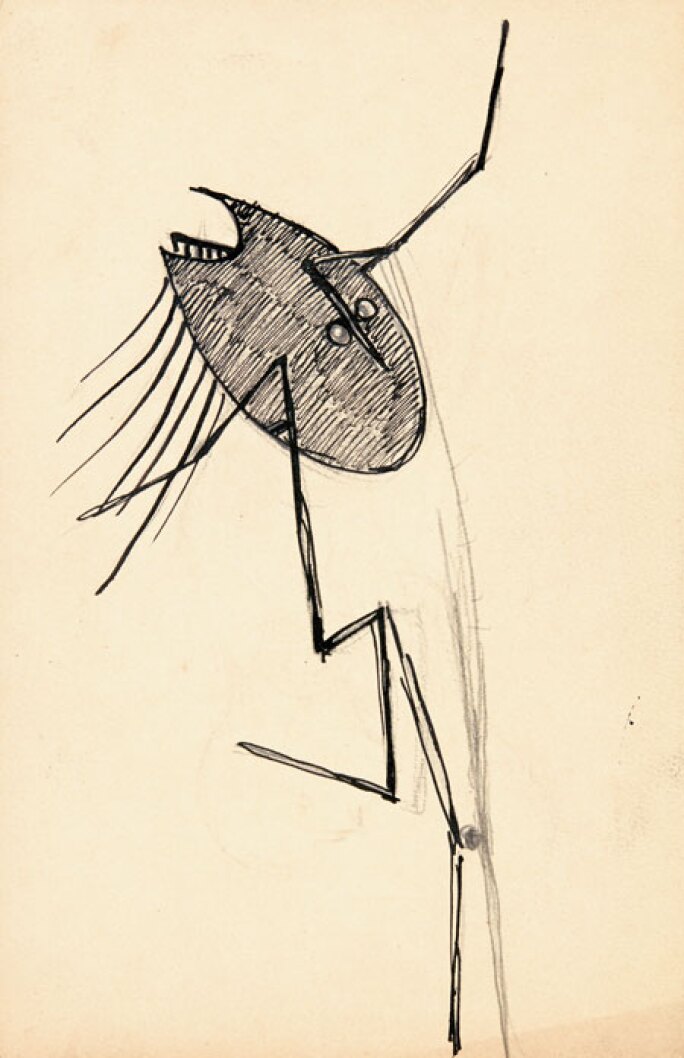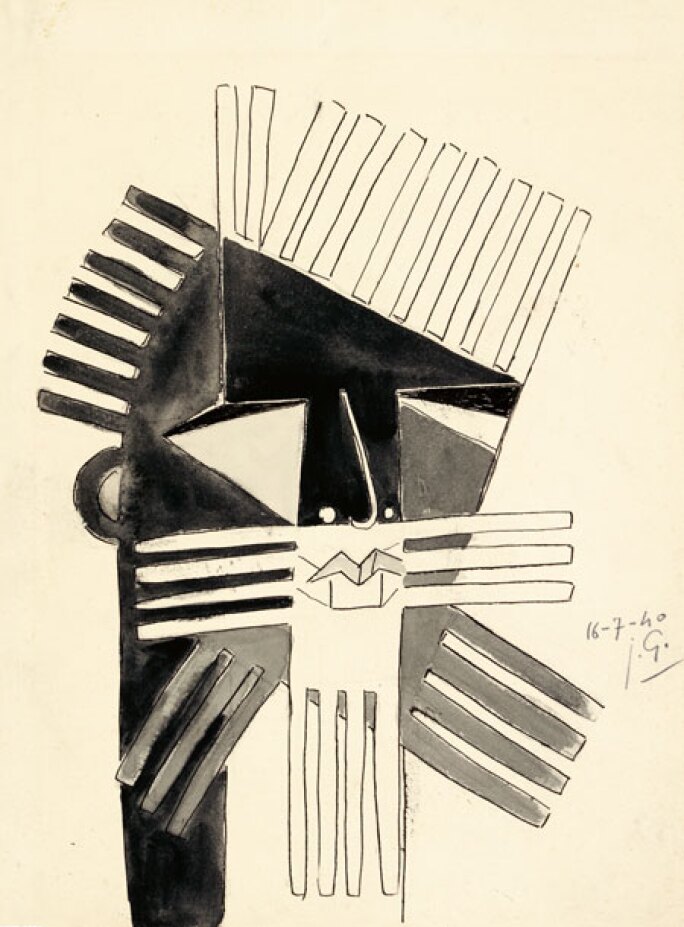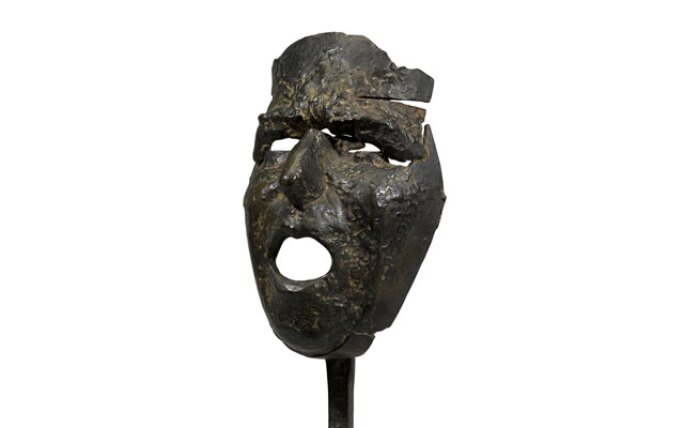B orn in 1876 into a family of metalworkers, Julio González's father taught him to work in gold, silver and iron at their family workshop. The upcoming Impressionist & Modern Art Day sale features a selection of sculptures and drawings by this fascinating Spanish artist.
He went to school at Circol Artist Sant Luc, which based its program of education on the medieval art guilds, inspired by England’s Arts and Crafts movement. Drawing on this broad training, when his first solo exhibition was held in Paris 1922, it was comprised of such diverse media as paintings, sculpture, drawings, jewellery and objet d’art.
González is best known for his work in iron. Along with his experience in welding, iron as a medium had a political significance through its strong association with war. The use of iron to make munitions in the wars which González experienced — from the First World War to the Spanish Civil War and later the Second World War — motivated him to use the metal to make extraordinary sculpture. González noted that: “…Today the door is wide open for this material to be, at last, forged and hammered by the peaceful hands of an artist."
While González’s connections to the local craft traditions in Barcelona shaped his understanding of form, his acquaintance with Pablo Picasso, whom he met towards the end of the 19th century, helped shape his development as a modern sculptor.
Beginning work as an advisor to Picasso on the use of iron in sculpture in 1928, and participating in Picasso’s research into Analytical Cubism, González went on to incorporate a range of modern styles in his work, from Cubism to Constructivism and Surrealism.
From the 1930s to the 1940s, as materials for sculpture became increasingly scarce due to the onset of war, González turned his attention to the medium of drawing. Much of his work reflects the physical and emotional sentiment of a Europe torn by war. It was a turmoil that affected him directly, forcing the separation of his daughter and her anti-Nazi German husband, who was wanted by the gestapo, from the rest of the family in 1938.
These eight exceptional works date from this period of the artist’s life, and in many cases express anguish that is at once collective and personal, portrayed through a series of faces or masks. These works are a reaction to the tyranny of war, depicting both the emotional, and in the cases of sculpture like Masque Montserrat Criant, the physical effects of war, with the mask’s burnt and fractured surface resembling a fragment of an explosion. The drawings can be considered a ‘visual diary’ of González’s experiences, in all cases finding the association between humanity and human experience, and stand as superb exemplars of the artist’s capacity to transform feeling into form.
CLICK HERE to view the full sale catalogue.


